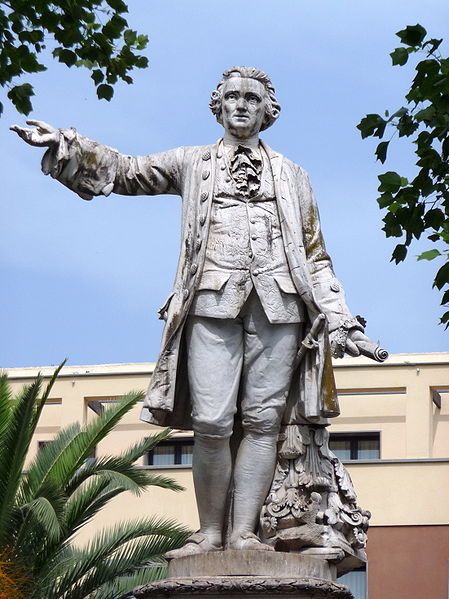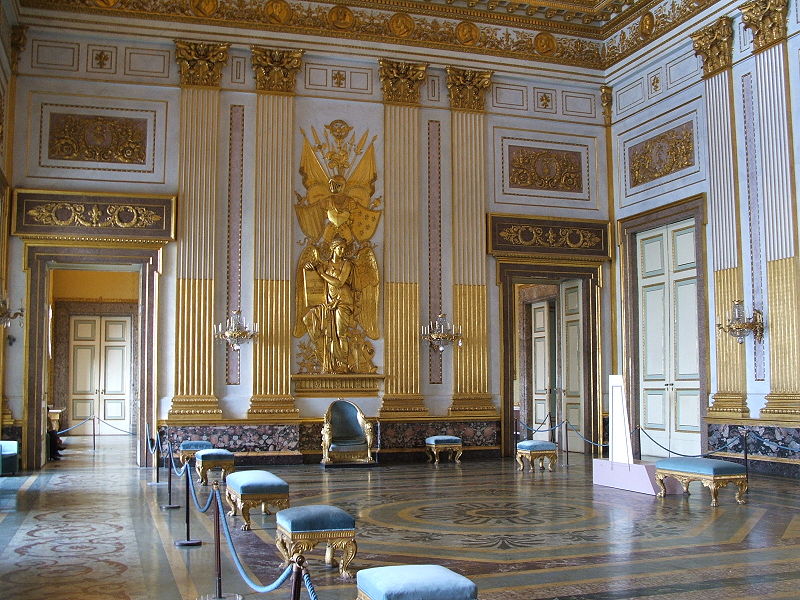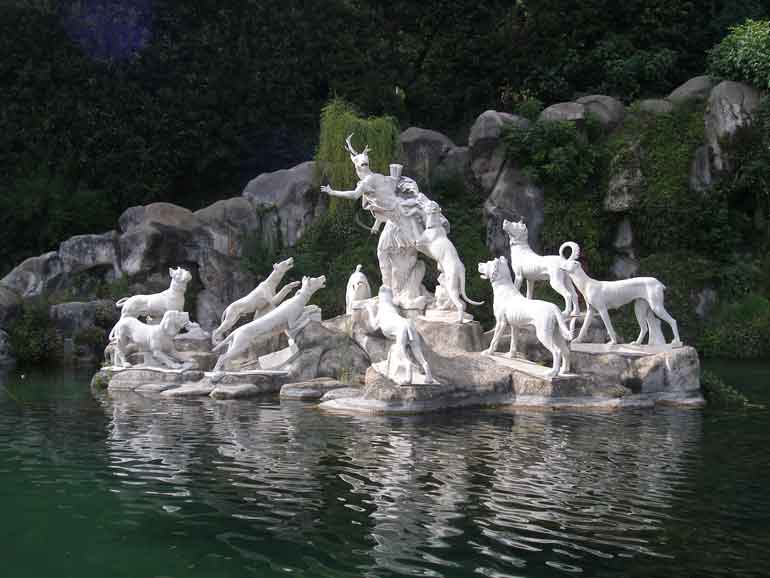<Back to Index>
- Chemist Justus von Liebig, 1803
- Architect Luigi Vanvitelli, 1700
- Fennoman Philosopher and Finnish Statesman Johan Vilhelm Snellman, 1806

Luigi Vanvitelli (May 12, 1700, Naples – March 1, 1773, Caserta) was an Italian engineer and architect. The most prominent eighteenth-century architect of Italy, he practiced a sober classicizing academic Late Baroque style that made an easy transition to Neoclassicism.
Vanvitelli was born at Naples, the son of a Dutch painter of land and cityscpapes (veduta), Caspar van Wittel, who also goes by the name Vanvitelli.
He was trained in Rome by the architect Nicola Salvi, with whom he worked on construction of the Trevi Fountain. Following his notable successes in the competitions for the facade of the Basilica di San Giovanni in Laterano (1732) and the facade of Palazzo Poli behind the Trevi Fountain, Pope Clement XII sent him to the Marche to build some papal projects. At Ancona in 1732, he devised the vast Lazzaretto, a pentagonal building covering more than 20,000 square meters, built to protect the military defensive authorities from the risk of contagious diseases potentially reaching the town with the ships. Later it was used also as a military hospital or as barracks.
In Rome, Vanvitelli stabilized the dome of St. Peter's Basilica when it developed cracks and found time to paint frescos in a chapel at Sant Cecilia in Trastevere. He also built a bridge over the Calore Irpino in Benevento.
Beginning in 1742 Vanvitelli designed (along with Nicola Salvi) the Chapel of St. John the Baptist for King John V of Portugal. It was built in Rome, disassembed in 1747, and shipped to Lisbon, where it was reassembled in the Church of St. Roch (Igreja de São Roque). It was completed in 1750, although the mosaics in it were not finished until 1752. Built of many precious marbles and other costly stones, as well as gilt bronze, it was held to be the most expensive chapel in Europe up to that time.
Vanvitelli's technical and engineering capabilities, together with his sense of scenographic drama led Charles VII of Naples to commission the great Palace of Caserta, intended as a fresh start for administering the ungovernable Kingdom of Naples. Vanvitelli worked on the project for the rest of his life, for Charles and for his successor Ferdinand IV. In Naples he designed the city's Palazzo Reale (1753) and some aristocratic palaces, and churches. His engineering talents were exercised as well: for Caserta he devised the great aqueduct system that brought water to run the cascades and fountains.
Luigi Vanvitelli died at Caserta in 1773.



